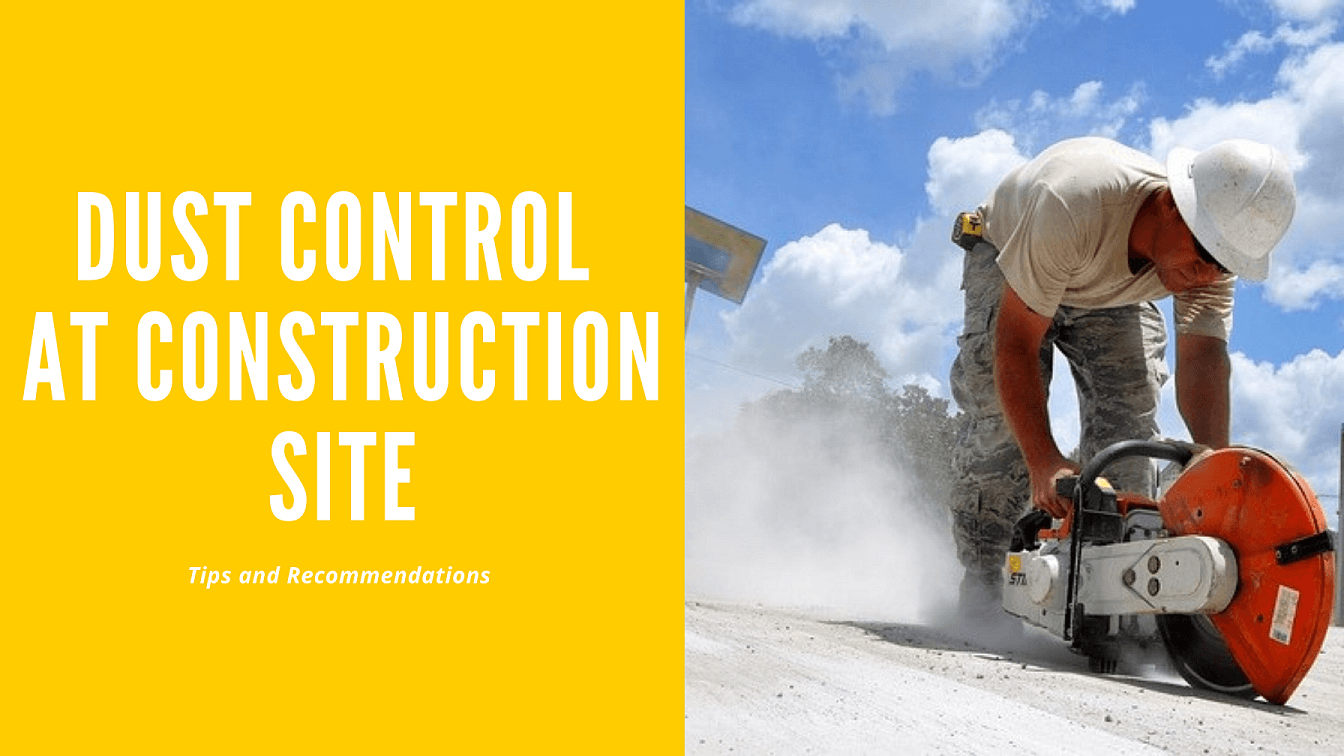4 Dust Control Tips for Construction Sites

One of the challenges you are likely to encounter on a construction site, regardless of whether you are in Australia or anywhere else in the world, is dust. Depending on the size of the construction project, the amount of dust may differ, as well as its consequences.
A Cancer Council study estimates that 587,000 Australian workers were exposed to silica dust in 2011, with 5,758 expected to develop cancer as a result. It is one of the reasons why dust suppression in Australia is taken very seriously.
Given the thousands of environmental protection laws in place, the construction industry must also take its ecological responsibilities about climate change much more seriously than before.
As such, site managers should protect buildings and people in their surroundings from airborne particles. It also means they should ensure that adequate dust control measures are in place to prevent the spread of the dust created.
This article shares four tips you can use in your construction site to control (and hopefully, prevent) dust in your construction site.
Setting Up Physical Barriers
One of the most common methods of controlling dust on construction sites is to use barriers such as board fences, snow fences, wind fences, hay bales, box walls, or sediment fences.
Board and windbreak fences can play an essential role in controlling dust on construction sites where the ground is constantly shaking.
Typically, these barriers originate from wood, preventing dust from flying off the site and avoiding any risk of erosion on the ground.
In order to use these barriers effectively for dust control on construction sites, you must first ensure that they are placed at right angles to each other, rather than around the perimeter of the site.
Anything from temporary walls to hay bales can help prevent the wind from raising dust as it passes around a site. Even parked site vehicles and temporary site offices have a role to play in minimizing excessive wind.
It is important to remember that this type of dust control measure is not there to prevent airborne particles from escaping. Instead, barriers help prevent airborne particles from being expelled.
It would be good advice to consider the goal of a physical barrier to be dust prevention.
Using Sweeping and Cleaning Equipment
Even with a series of dust control measures in place, it is difficult to deal with all the airborne particles that a busy construction site generates.
Therefore, it will be necessary to invest in sweeping equipment that helps to manage the dust. Manual sweeping in a site’s dusty area is more effective than you might think, but automated systems will often be needed close to your site to make a real impact.
Fortunately, there is a wide range of road and pavement sweeping vehicles of different sizes, as well as dust suppression technology that you can deploy to keep nearby infrastructure dust-free, at least at night.
Besides, site managers should keep an eye on washing facilities for demucking before the engines leave your site to reach the road. Particular attention should be paid to wheel washing facilities, because mud that is transferred from a site to the road will quickly dry and turn to dust when other road users pass over it.
You should also keep in mind that sweeping will only be effective if it is a road construction site. Equipment will be used to sweep dust and debris off the road.
Using Tailored Dust Control Solutions
Although there are standard dust control measures, tailor-made systems should be considered for each site. When large projects are underway, such as those found on civil engineering sites, custom dust control measures are usually the best solution.
Dust control systems may differ from one site to the other. After all, no two construction sites will ever be identical. A tailor-made solution can also include standard dust control measures, but it is important to note that each site’s particularity will determine the most effective approach.
Applying Tillage
This method reduces wind erosion at the sites, thereby maximizing dust control.
Tillage is a control measure carried out with chisel type ploughs on exposed soil. It should always start on the windward side of the site.
Note that tillage is only feasible in flat areas. It should leave six-inch (minimum) furrows, preferably perpendicular to the prevailing wind direction, to achieve the most significant reduction in wind erosion.
In conclusion, dust management has to be part of the planning process every time you embark on a construction project. Too much dust is a serious health issue and can make work impossible.
There are many ways to control dust on a construction site. Indeed, a combination of methods, including custom methods, is usually the best way to achieve the highest control levels.
Ongoing training and research into ways to reduce the spread of dust will only improve the construction industry.
AUTHOR BIO
Troy Adams is the Managing Director of Global Road Technology, an international engineering technology company in Australia that specializes in engineered solutions for dust suppression, erosion control, soil stabilization and water management. A pioneering, socially conscious Australian entrepreneur, Troy is passionate about safer, healthier and more cost-effective solutions in the mining and infrastructure sectors and beyond.
